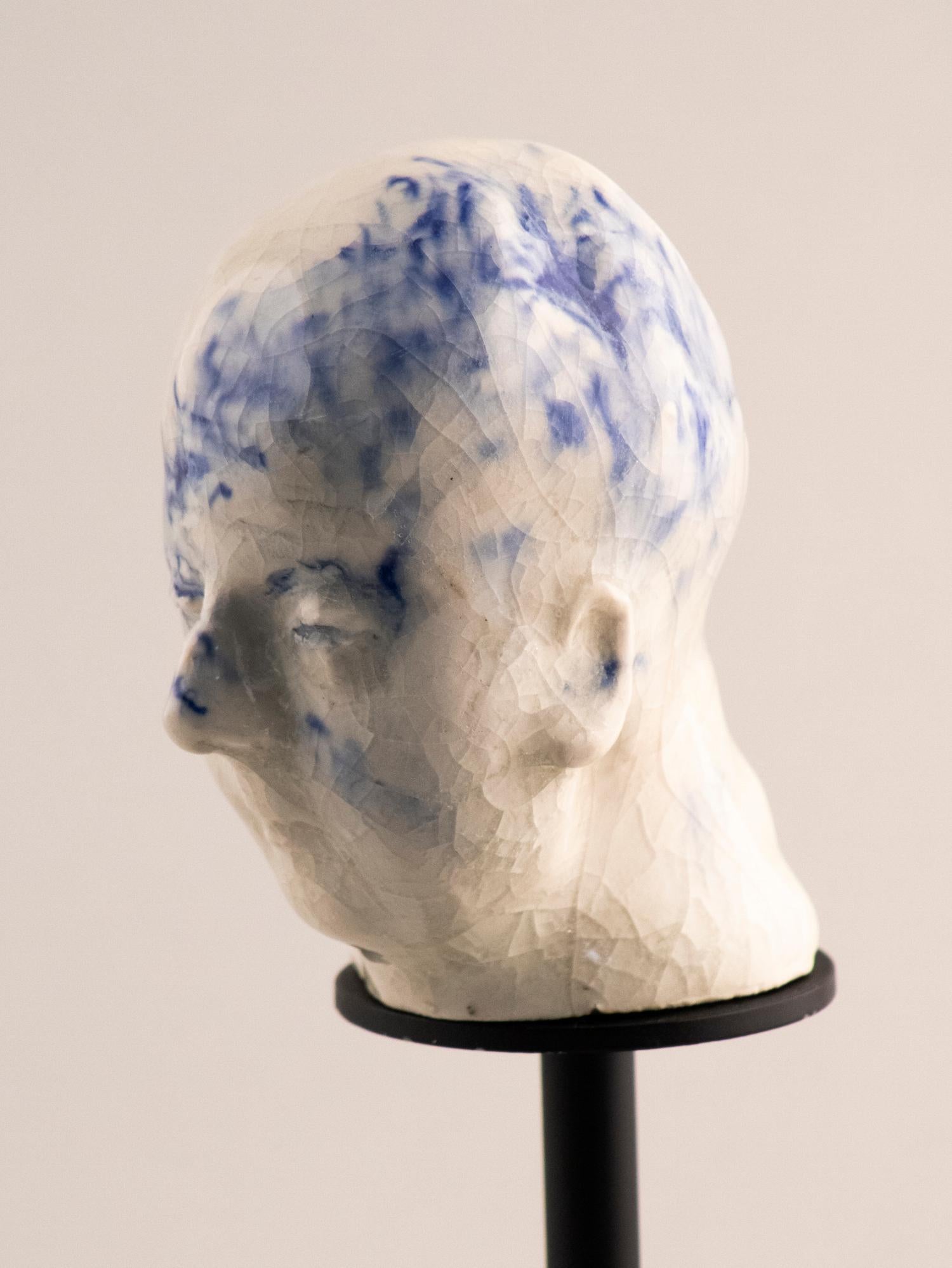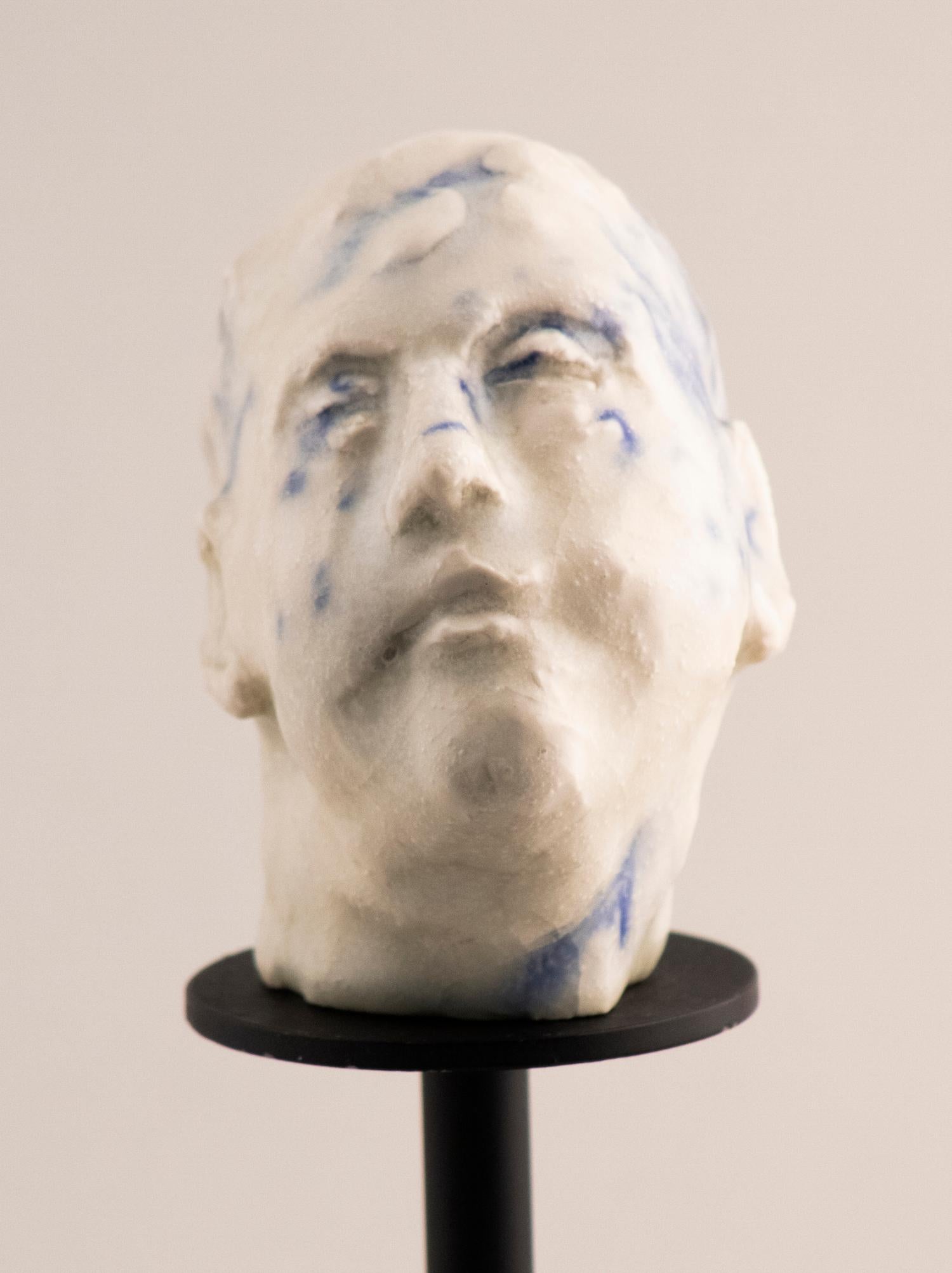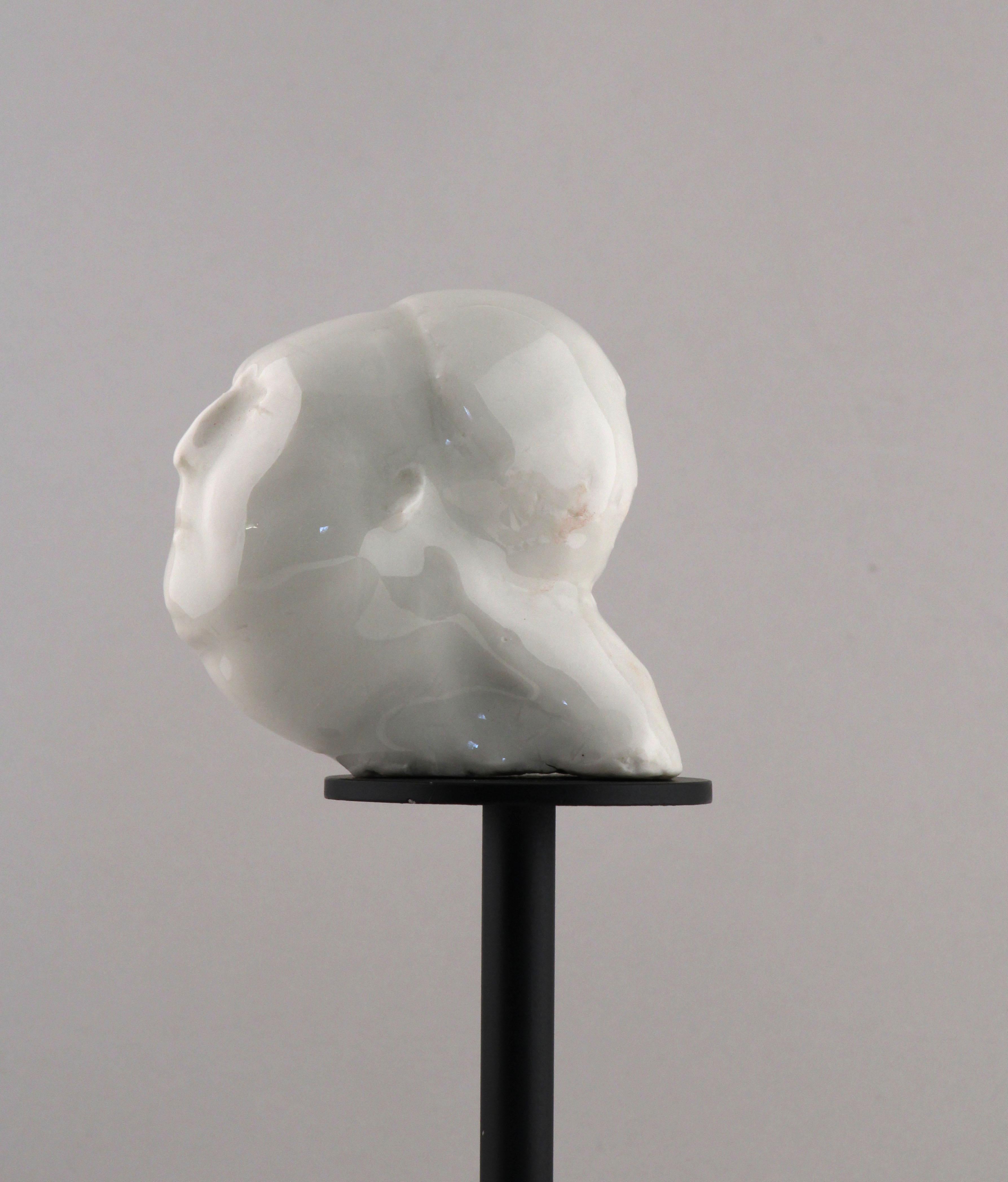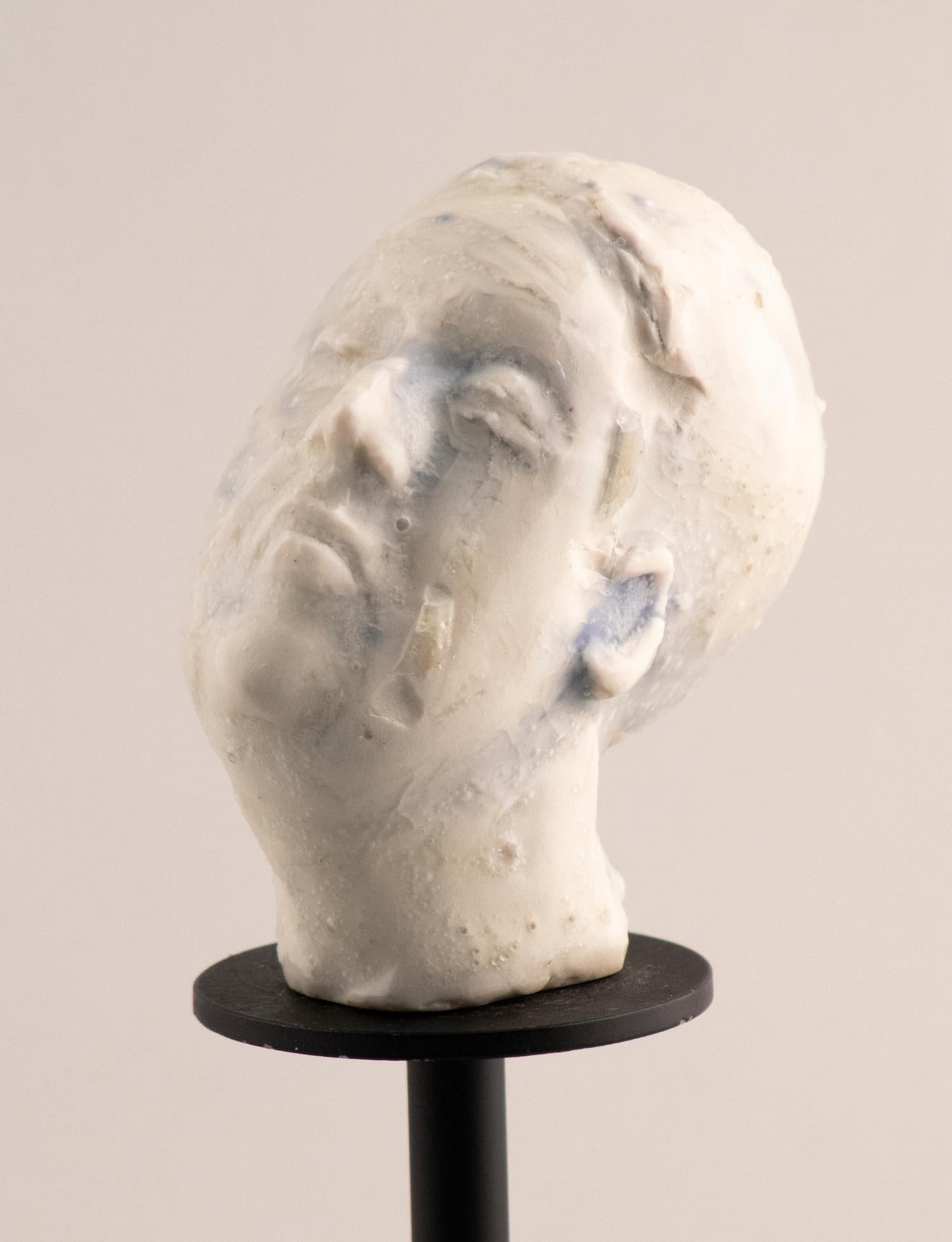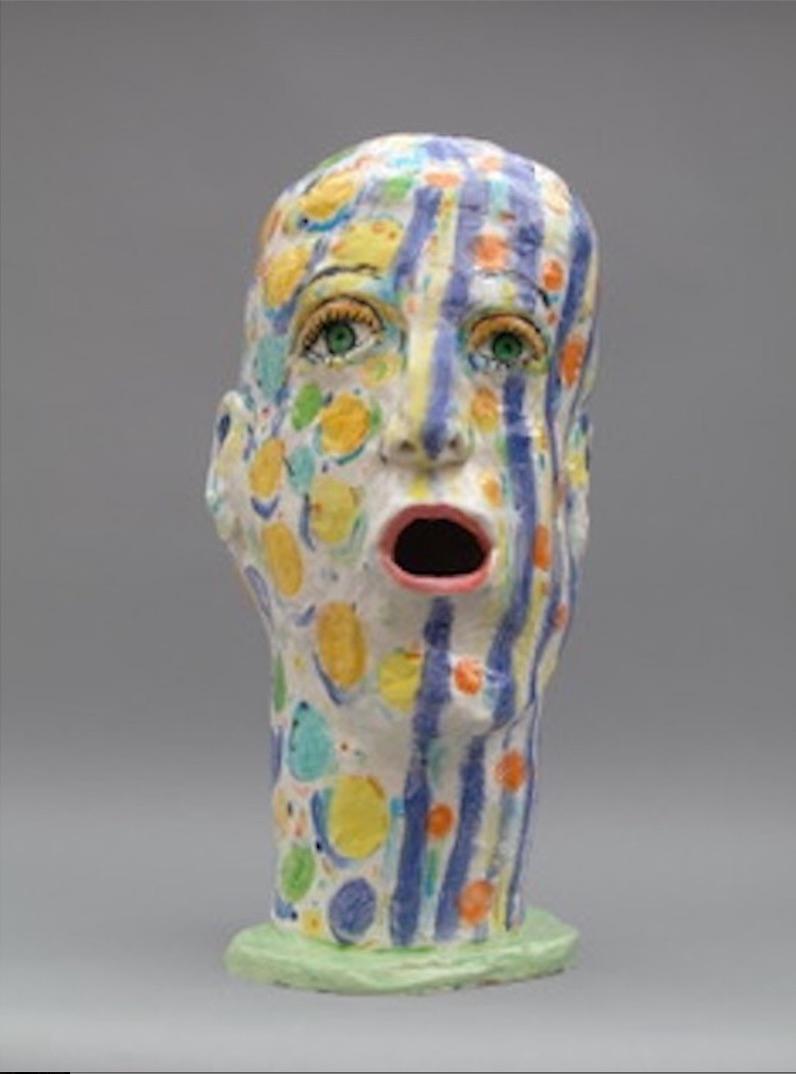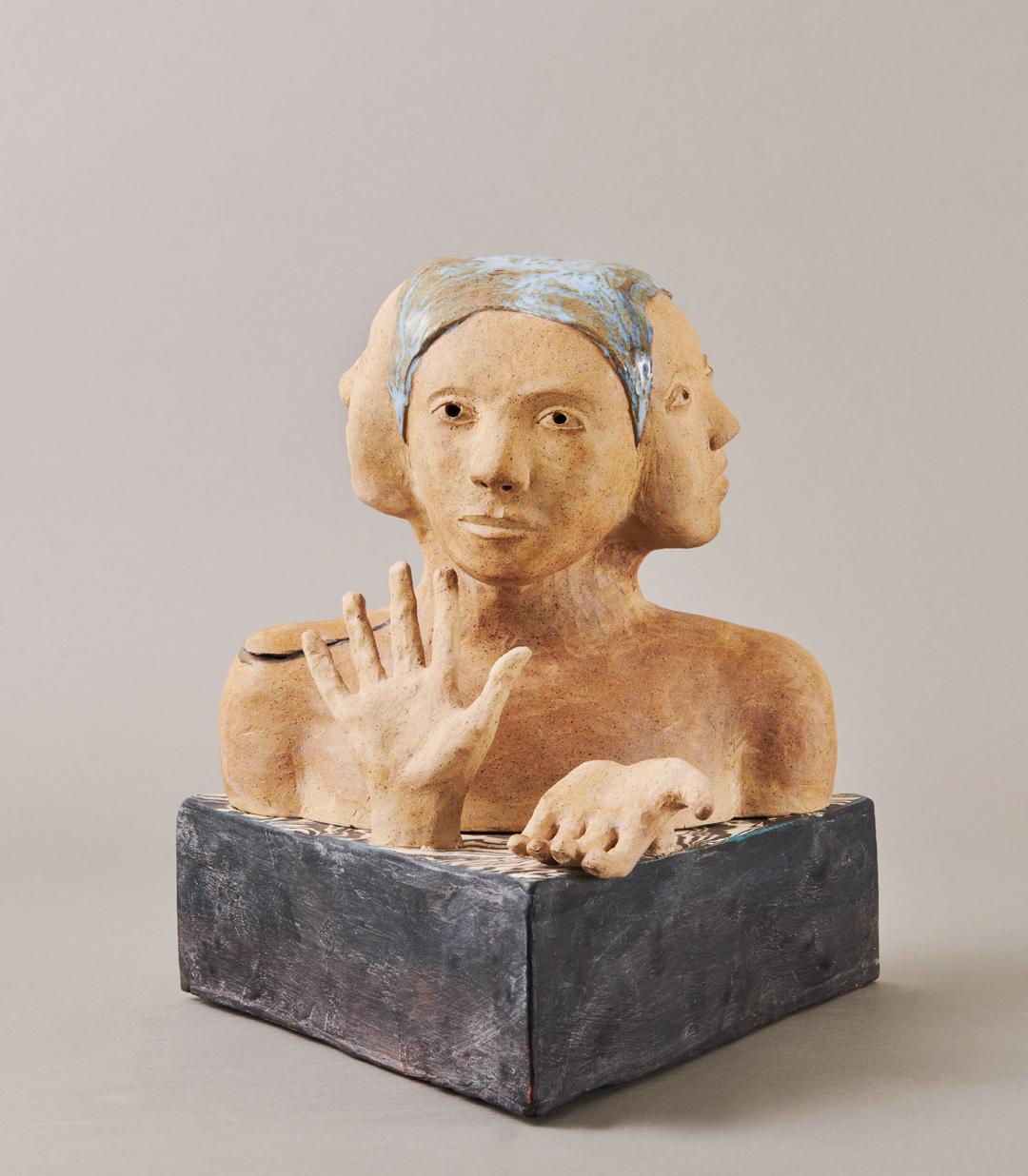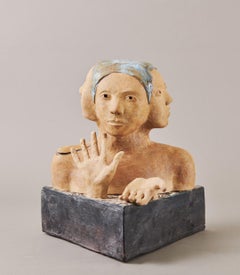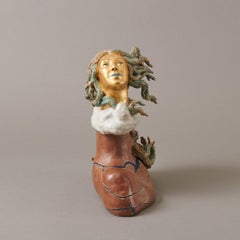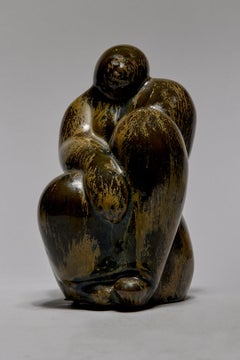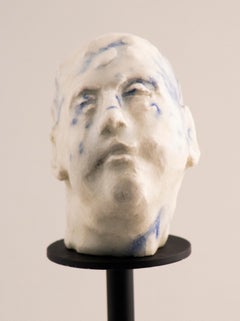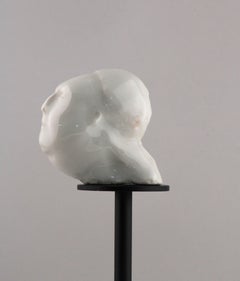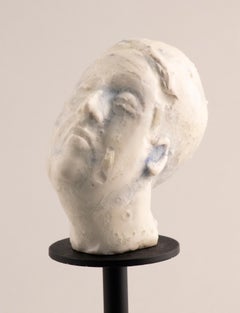Items Similar to Maybe She's Not a Straight On Type of Girl, Marbled Ceramic Head, 21st Century
Video Loading
Want more images or videos?
Request additional images or videos from the seller
1 of 14
Kristen NewellMaybe She's Not a Straight On Type of Girl, Marbled Ceramic Head, 21st Century2022
2022
$2,500
£1,897.96
€2,170.86
CA$3,492.86
A$3,884.83
CHF 2,028.54
MX$47,274.20
NOK 25,907.49
SEK 24,296.66
DKK 16,201.95
Shipping
Retrieving quote...The 1stDibs Promise:
Authenticity Guarantee,
Money-Back Guarantee,
24-Hour Cancellation
About the Item
Kristen Newell (American, b. 1989)
Maybe She's Not a Straight On Type of Gal, 2022
Stoneware and porcelain
Signed and dated on bottom
12 x 9 x 9 inches
Kristen Newell was born in a small town on the coast of Massachusetts, where from a very early age, she demonstrated a strong propensity for the arts. Important additional inspiration came from her family and from the family of a childhood friend, where Kristen found herself surrounded by the work of Paul Manship, her friend’s grandfather and one of America’s greatest sculptors.
With increased focus on her art, along with winning numerous awards throughout high school, Newell eagerly enrolled in the arts program at University of Vermont and augmented her studies with a valuable year at the Cleveland Institute of Art.
Upon graduation, Newell moved back to Cleveland to begin her art career and started participating in group shows, including River Gallery and the Ohio State Fair. In 2016, she began an internship at BRICK Ceramic + Design Studio, a well-known hub for Cleveland ceramicists. In 2019, she had her first solo exhibition at BRICK, and has since shown work at Gallery U, Abattoir Gallery, Waterloo Arts and WOLFS.
In the spring of 2021, Newell worked with artist Anna Chapman, creating an immersive-themed show at Waterloo Arts, and in 2022, participated in the CAN Triennial of Northeast Ohio, where a work of hers was purchased by the Cleveland Art Association (Carta).
Today, Newell’s primary medium is clay, creating dimensional sculptures and relief tiles, while continuing to paint and work with mixed media. She recently added the art of creating large-scale parade puppets to her bailiwick. Of late, Newell draws inspiration and perspective from a broad swath of subject matter, including biological systems, philosophy, history, psychology, literature, and architecture. As a process artist, her works unfold as conversation between form and content, playing with scale, color, and material to tell stories and convey feeling. Newell also teaches, working within underserved neighborhoods, offering classes in local artistic spaces, as well as working with individuals to facilitate custom ceramics projects.
- Creator:Kristen Newell (1989, American)
- Creation Year:2022
- Dimensions:Height: 12 in (30.48 cm)Width: 9 in (22.86 cm)Depth: 9 in (22.86 cm)
- Medium:
- Movement & Style:
- Period:
- Condition:
- Gallery Location:Beachwood, OH
- Reference Number:1stDibs: LU1768212412302
About the Seller
5.0
Vetted Professional Seller
Every seller passes strict standards for authenticity and reliability
Established in 1975
1stDibs seller since 2022
34 sales on 1stDibs
Typical response time: 1 hour
- ShippingRetrieving quote...Shipping from: Beachwood, OH
- Return Policy
Authenticity Guarantee
In the unlikely event there’s an issue with an item’s authenticity, contact us within 1 year for a full refund. DetailsMoney-Back Guarantee
If your item is not as described, is damaged in transit, or does not arrive, contact us within 7 days for a full refund. Details24-Hour Cancellation
You have a 24-hour grace period in which to reconsider your purchase, with no questions asked.Vetted Professional Sellers
Our world-class sellers must adhere to strict standards for service and quality, maintaining the integrity of our listings.Price-Match Guarantee
If you find that a seller listed the same item for a lower price elsewhere, we’ll match it.Trusted Global Delivery
Our best-in-class carrier network provides specialized shipping options worldwide, including custom delivery.More From This Seller
View AllFour Three Two One, 21st Century Contemporary Surrealist Ceramic Sculpture
Located in Beachwood, OH
Kristen Newell (American, b. 1989)
Four Three Two One, 2015
Stoneware, porcelain and acrylic
Signed and dated on bottom
16 x 15 x 14 inches
Kristen Newell was born in a small town on the coast of Massachusetts, where from a very early age, she demonstrated a strong propensity for the arts. Important additional inspiration came from her family and from the family of a childhood friend, where Kristen found herself surrounded by the work of Paul Manship, her friend’s grandfather and one of America’s greatest sculptors.
With increased focus on her art, along with winning numerous awards throughout high school, Newell eagerly enrolled in the arts program at University of Vermont and augmented her studies with a valuable year at the Cleveland Institute of Art.
Upon graduation, Newell moved back to Cleveland to begin her art career and started participating in group shows, including River Gallery and the Ohio State...
Category
2010s Contemporary Figurative Sculptures
Materials
Porcelain, Stoneware, Acrylic
Venus with Koalas in Her Hair, 21st Century Contemporary Ceramic Sculpture
Located in Beachwood, OH
Kristen Newell (American, b. 1989)
Venus with Koalas in Her Hair, 2020
Glazed stoneware and acrylic
Signed and dated on bottom
14 x 12 x 6 inches
Kristen Newell was born in a small town on the coast of Massachusetts, where from a very early age, she demonstrated a strong propensity for the arts. Important additional inspiration came from her family and from the family of a childhood friend, where Kristen found herself surrounded by the work of Paul Manship, her friend’s grandfather and one of America’s greatest sculptors.
With increased focus on her art, along with winning numerous awards throughout high school, Newell eagerly enrolled in the arts program at University of Vermont and augmented her studies with a valuable year at the Cleveland Institute of Art.
Upon graduation, Newell moved back to Cleveland to begin her art career and started participating in group shows, including River Gallery and the Ohio State...
Category
2010s Contemporary Figurative Sculptures
Materials
Glaze, Stoneware, Acrylic
Early 20th Century Ceramic Bust of a Woman, Cleveland School Artist
Located in Beachwood, OH
Edris Eckhardt (American, 1905-1998)
Bust, 1933
Ceramic
Signed and dated base
8.5 x 4.5 x 4.5 inches, including base
Born in Cleveland, Ohio January 28, 1905, Edris was given the na...
Category
1930s Figurative Sculptures
Materials
Ceramic
Mid-Century Ceramic Sculpture of a Seated Female, Cleveland School Artist
Located in Beachwood, OH
Walter Sinz (American, 1881-1966)
Seated Female, c. 1940
Ceramic
6 x 3.5 x 3.5 inches
Walter A. Sinz was an American sculptor born in Cleveland, Ohio on July 13, 1881. Sinz’s fathe...
Category
1940s Figurative Sculptures
Materials
Ceramic
Bust of Josephine Baker, Mid-Century Ceramic Female Face
By Vally Wieselthier
Located in Beachwood, OH
Attributed to Vally Wieselthier (Austrian-American, 1895-1945)
Bust of Josephine Baker, c. 1930
Ceramic
Stamped on base
11.5 x 5.5 x 5.5 inches
Vally Wieselthier (1895 Vienna--1945 ...
Category
1930s Figurative Sculptures
Materials
Ceramic
Faces Vase, 20th Century Ceramic Drama Masks, Italian Artist
By Marcello Fantoni
Located in Beachwood, OH
Marcello Fantoni (Italian, 1915-2011)
Faces Vase
Ceramic
Signed on bottom
10.5 x 5.5 x 6 inches
Marcello Fantoni was an Italian sculptor, ceramicist, metalworker, multi-media artist...
Category
Mid-20th Century More Art
Materials
Ceramic
You May Also Like
The Worry Series, Stoneware head: 'Memory'
Located in New York, NY
The Worry
This series began in reaction to photos of politicians and world leaders during any number of the current world crises. As news cycles proliferate, these images swirl past ...
Category
2010s Contemporary Figurative Sculptures
Materials
Metal
The Worry Series, Stoneware head: 'Faith'
Located in New York, NY
The Worry
This series began in reaction to photos of politicians and world leaders during any number of the current world crises. As news cycles proliferate, these images swirl past ...
Category
2010s Contemporary Figurative Sculptures
Materials
Metal
The Worry Series, Stoneware head: 'Pure'
Located in New York, NY
The Worry
This series began in reaction to photos of politicians and world leaders during any number of the current world crises. As news cycles proliferate, these images swirl past ...
Category
2010s Contemporary Figurative Sculptures
Materials
Metal
The Worry Series, Stoneware head: 'Destroyed'
Located in New York, NY
The Worry
This series began in reaction to photos of politicians and world leaders during any number of the current world crises. As news cycles proliferate, these images swirl past ...
Category
2010s Contemporary Figurative Sculptures
Materials
Metal
Patterned Head 3
By Linda H. Smith
Located in Santa Monica, CA
Hand built with slabs using Laguna Clay EM347 white ware with grog and bisque fired to cone 06. Then fired to cone 06 with low fire underglazes and glazes.
Category
Early 2000s Contemporary Figurative Sculptures
Materials
Clay
$2,170 Sale Price
30% Off
The Worry Series, Stoneware head: 'Hard'
Located in New York, NY
The Worry
This series began in reaction to photos of politicians and world leaders during any number of the current world crises. As news cycles proliferate, these images swirl past ...
Category
2010s Contemporary Figurative Sculptures
Materials
Metal
